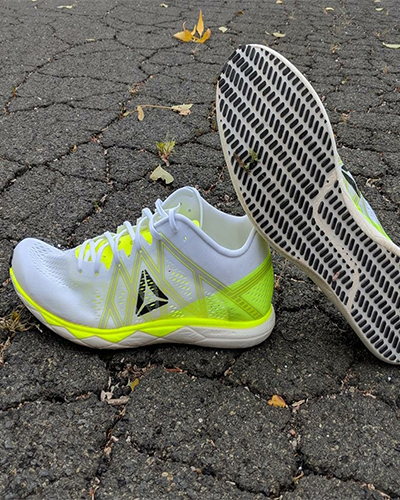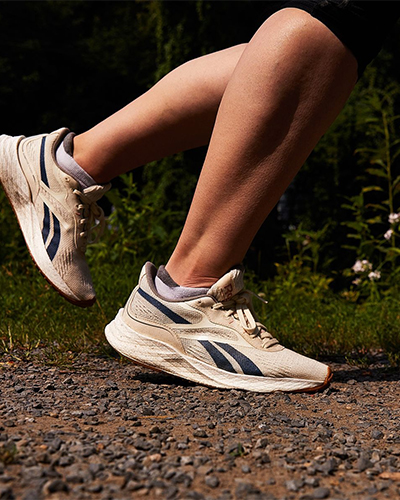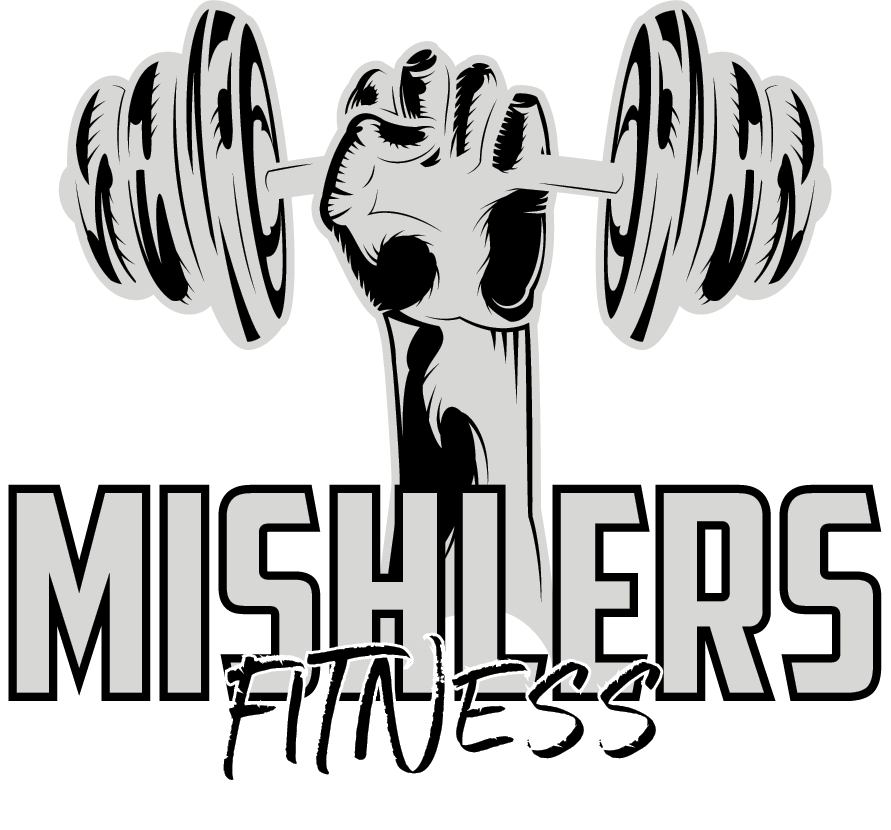The company that would later become Reebok began as teenage tinkering: In 1895, Joseph William Foster started making shoes in his bedroom in Bolton, England. He developed some of the first running spikes, and soon opened a factory called Olympic Works to meet growing demand from athletes for his renowned “running pumps.” The company’s status as a performance shoemaker was cemented at the 1924 Olympics, where British runners Harold Abrahams and Eric Liddell brought home gold medals while wearing shoes made in the Olympic Works factory.
In 1958, Joseph William Foster’s two grandsons founded Reebok (named after an Afrikaans word for a type of antelope) and continued to release innovative shoes. The company’s Aztrek shoe nabbed a five-star rating from Runner’s World back in 1979, and its women’s aerobics shoes, which debuted in the mid-80s, became wildly popular during the step aerobics craze. In the early 2000s, Reebok received high marks for its Premier line of running shoes, including the Trinity KFS (short for Kinetic Fit System). That system in this shoe’s upper was designed to flex with the foot as it changed shape during a runner’s stride, which resulted in a better fit and a more stable ride.
Floating on Foam
The company launched its Pebax-based Floatride Foam in the spring of 2017, which delivers optimal energy return with much less weight than EVA or TPU-based foams. This foam helps the Floatride Run Fast deliver excellent cushioning without bulking up the weight, making for a remarkable speed shoe that was worthy of our Gear of the Year award. A new version of the foam, called Floatride Energy, debuted on the Forever Floatride Energy shoe in 2019. It’s made of thermoplastic elastomer (TPE) beads that are steam-molded together to create the insole (a similar technique is used to make Adidas Boost foam). The result is a material that’s 30 percent lighter than EVA, and it helps make shoes like the Floatride Energy 3 surprisingly light and responsive.
How We Tested
To select the best Reebok shoes below, we pored over company’s newest releases, consulted feedback from our more than 350 wear-testers, and spoke with the brand’s design teams. We also analyze data from the RW Shoe Lab, where we’ve run a gamut of mechanical tests. That includes comparing the energy return of Reebok’s castor bean, TPE, and Pebax-based foams; measuring the changes in midsole softness among several iterations of the Floatride Run Fast; and gauging the durability of carbon rubber outsoles. In addition, we’ve selected a variety of shoes to suit different runners and running styles and have linked to full RW reviews where possible. The picks below are the latest in a legacy of performance footwear that stretches back well over a century.
Floatride Energy 3 - $79.33

Though the latest version of Reebok’s impressive entry-level shoe has dropped the “Forever” from its name, it maintains the best part of both the original Floatride Energy and its sequel—the midsole. Floatride Energy Foam provides a lively, well-cushioned ride that feels great during long efforts and tempo runs alike with energy return that punches way above running shoes in its $100 class. The 3 also swaps in a redesigned, more comfortable upper that breathes better than that of its predecessor. The new mesh upper wraps the foot more closely for a better fit, and updated materials atop a durable and grippy full rubber outsole give the shoe a surprisingly premium feel at a very approachable price point.
Nano X1 - $107.59

Developed over a decade ago, Nano shoes are designed to handle all kinds of workouts, and the X1 includes some key improvements over past models. Most notably, it now comes with Reebok’s lightweight, bouncy Floatride Energy foam in the forefoot for added cushioning and responsiveness. The Flexweave knit upper uses strong, Kevlar-like strands for targeted support during multidirectional movement, while the wide vents in the mesh allow great breathability. An external heel counter adds extra stability that makes the Nano X1 a great pick for gym days, and a short shake-out run isn’t out of the question, either.
Floatride Run Fast 3 - $140.00

Reebok’s answer to featherweight racers like Nike’s Vaporfly, the Floatride Run Fast makes an excellent shoe for tempo runs. But, instead of a carbon-fiber plate, the centerpiece of the Run Fast is its Pebax-based Floatride Foam. The foam’s low weight means these shoes can carry a generous slice of it, giving them more cushioning than you’d find in the average speed shoe. (Overall, this third version feels much closer to 2018’s original race-ready Run Fast than the slightly heavier Floatride Run Fast 2, which gave us more of a daily-trainer vibe.) The carbon rubber outsole has enough durability to meet a demanding training schedule, and the thin mesh upper keeps the weight down and helps the shoe breathe well, too.
Floatride Run Fast Pro - $229.97

This is the premium version of the Run Fast, and at an incredible 3.5 ounces, it’s even lighter than the version above. It is built for speed: A thinner midsole saves weight, and the outsole is pared down to a grid of small rubber lugs. A single layer mesh upper and EVA-based bootie sockliner provide a snug fit with a pinch of extra cushioning underfoot. Lace up in a pair of these kicks, and you’ll be knocking out PRs in no time.
Forever Floatride Grow - $99.70

The Floatride Grow is an interesting take on a performance running shoe: From top to bottom, it’s made with plant-based materials. The mesh upper is derived from eucalyptus bark, the footbed utilizes an EVA-like material created from algae, and the midsole is a foam made from castor bean oil (Reebok claims the foam has performance similar to its Floatride Energy formulation). While other brands have incorporated limited recycled materials into their shoes, the Floatride Grow ups the ante for sustainable running.
Floatride Energy Symmetros - $130.00

The Symmetros reminded one basketballer-turned-runner of her favorite pair of Air Jordans: The high collar locks in support at the ankle, a durable rubber sole grips even the slickest blacktop, and the wide, flared midsole feels light and bouncy yet very stable for a neutral shoe. The stability comes from an external heel counter connected to a guidance groove that spans the full length of the outsole, so transitions feel secure as you build up to a propulsive toe-off. Though not quite as responsive as the premium Pebax midsole in the Floatride Run Fast, Reebok’s Floatride Energy foam used in this model has plenty of cushioning to push your long runs into double-digit territory. “The Symmetros has gotten me through two-hour runs and felt just as lively toward the end as when I laced up,” one tester said.
The Final Word
The Reebok brand changed hands last year, and the acquisition was completed in March this year. The deal raises questions about Reebok’s future direction, and its running shoes in particular. If a shoe giant like adidas failed to make Reebok work, then it seems obvious that the Authentic brand group would adopt a different strategy to make Reebok commercially successful. At this time, it’s not known whether performance running shoes are an important part (or not) of the said strategy.




